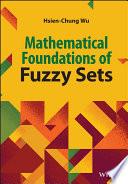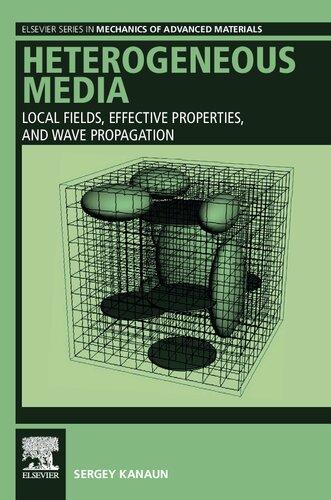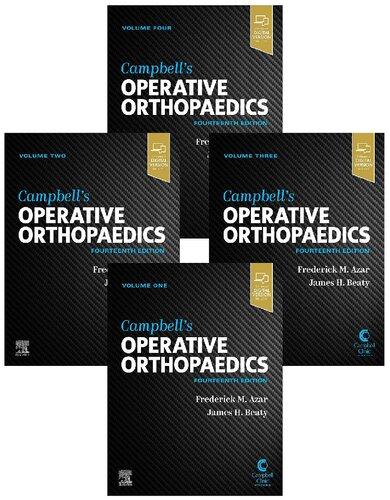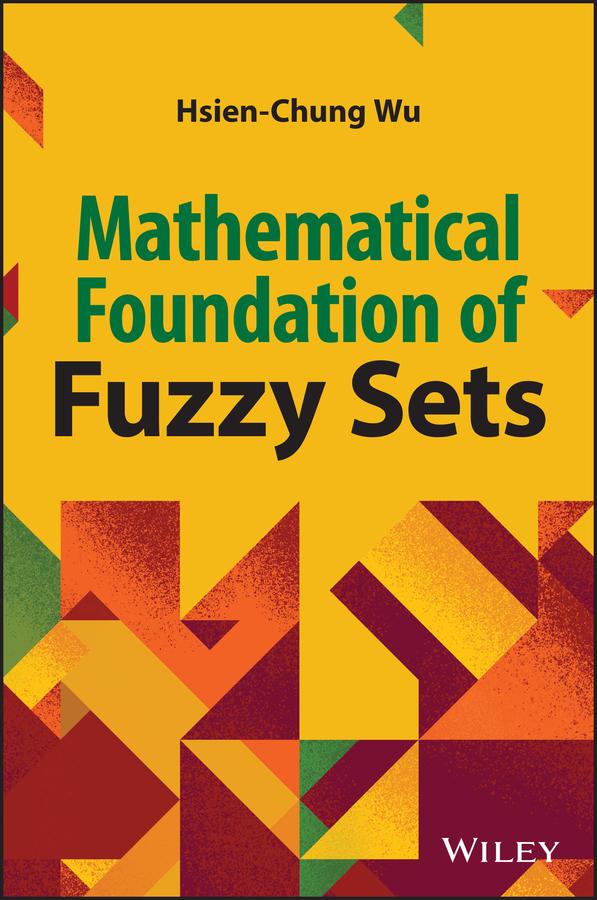MathematicalFoundationsofFuzzySets
Thiseditionfirstpublished2023 ©2023JohnWileyandSons,Ltd
Allrightsreserved.Nopartofthispublicationmaybereproduced,storedinaretrievalsystem,or transmitted,inanyformorbyanymeans,electronic,mechanical,photocopying,recordingorotherwise, exceptaspermittedbylaw.Adviceonhowtoobtainpermissiontoreusematerialfromthistitleisavailable athttp://www.wiley.com/go/permissions.
TherightofHsien-ChungWutobeidentifiedastheauthorofthisworkhasbeenassertedinaccordance withlaw.
RegisteredOffices
JohnWiley&Sons,Inc.,111RiverStreet,Hoboken,NJ07030,USA
JohnWiley&SonsLtd,TheAtrium,SouthernGate,Chichester,WestSussex,PO198SQ,UK
Fordetailsofourglobaleditorialoffices,customerservices,andmoreinformationaboutWileyproducts visitusatwww.wiley.com.
Wileyalsopublishesitsbooksinavarietyofelectronicformatsandbyprint-on-demand.Somecontentthat appearsinstandardprintversionsofthisbookmaynotbeavailableinotherformats.
Trademarks:WileyandtheWileylogoaretrademarksorregisteredtrademarksofJohnWiley&Sons,Inc. and/oritsaffiliatesintheUnitedStatesandothercountriesandmaynotbeusedwithoutwritten permission.Allothertrademarksarethepropertyoftheirrespectiveowners.JohnWiley&Sons,Inc. isnotassociatedwithanyproductorvendormentionedinthisbook.
LimitofLiability/DisclaimerofWarranty
Whilethepublisherandauthorshaveusedtheirbesteffortsinpreparingthiswork,theymakeno representationsorwarrantieswithrespecttotheaccuracyorcompletenessofthecontentsofthisworkand specificallydisclaimallwarranties,includingwithoutlimitationanyimpliedwarrantiesofmerchantability orfitnessforaparticularpurpose.Nowarrantymaybecreatedorextendedbysalesrepresentatives,written salesmaterialsorpromotionalstatementsforthiswork.Thefactthatanorganization,website,orproduct isreferredtointhisworkasacitationand/orpotentialsourceoffurtherinformationdoesnotmeanthat thepublisherandauthorsendorsetheinformationorservicestheorganization,website,orproductmay provideorrecommendationsitmaymake.Thisworkissoldwiththeunderstandingthatthepublisheris notengagedinrenderingprofessionalservices.Theadviceandstrategiescontainedhereinmaynotbe suitableforyoursituation.Youshouldconsultwithaspecialistwhereappropriate.Further,readersshould beawarethatwebsiteslistedinthisworkmayhavechangedordisappearedbetweenwhenthisworkwas writtenandwhenitisread.Neitherthepublishernorauthorsshallbeliableforanylossofprofitorany othercommercialdamages,includingbutnotlimitedtospecial,incidental,consequential,orother damages.
LibraryofCongressCataloging-in-PublicationDataAppliedfor: HardbackISBN:9781119981527
CoverDesign:Wiley
CoverImage:©oxygen/GettyImages
Setin9.5/12.5ptSTIXTwoTextbyStraive,Chennai,India
Contents
Preface ix
1MathematicalAnalysis 1
1.1InfimumandSupremum 1
1.2LimitInferiorandLimitSuperior 3
1.3Semi-Continuity 11
1.4Miscellaneous 19
2FuzzySets 23
2.1MembershipFunctions 23
2.2 �� -levelSets 24
2.3TypesofFuzzySets 34
3SetOperationsofFuzzySets 43
3.1ComplementofFuzzySets 43
3.2IntersectionofFuzzySets 44
3.3UnionofFuzzySets 51
3.4InductiveandDirectDefinitions 56
3.5 �� -LevelSetsofIntersectionandUnion 61
3.6MixedSetOperations 65
4GeneralizedExtensionPrinciple 69
4.1ExtensionPrincipleBasedontheEuclideanSpace 69
4.2ExtensionPrincipleBasedontheProductSpaces 75
4.3ExtensionPrincipleBasedontheTriangularNorms 84
4.4GeneralizedExtensionPrinciple 92
5GeneratingFuzzySets 109
5.1FamiliesofSets 110
5.2NestedFamilies 112
5.3GeneratingFuzzySetsfromNestedFamilies 119
5.4GeneratingFuzzySetsBasedontheExpressionintheDecomposition Theorem 123
5.4.1TheOrdinarySituation 123
5.4.2BasedonOneFunction 129
5.4.3BasedonTwoFunctions 140
5.5GeneratingFuzzyIntervals 150
5.6UniquenessofConstruction 160
6FuzzificationofCrispFunctions 173
6.1FuzzificationUsingtheExtensionPrinciple 173
6.2FuzzificationUsingtheExpressionintheDecompositionTheorem 176
6.2.1NestedFamilyUsing �� -LevelSets 177
6.2.2NestedFamilyUsingEndpoints 181
6.2.3Non-NestedFamilyUsingEndpoints 184
6.3TheRelationshipsbetweenEPandDT 187
6.3.1TheEquivalences 187
6.3.2TheFuzziness 191
6.4DifferentiationofFuzzyFunctions 196
6.4.1DefinedonOpenIntervals 196
6.4.2FuzzificationofDifferentiableFunctionsUsingtheExtensionPrinciple 197
6.4.3FuzzificationofDifferentiableFunctionsUsingtheExpressioninthe DecompositionTheorem 198
6.5IntegralsofFuzzyFunctions 201
6.5.1LebesgueIntegralsonaMeasurableSet 201
6.5.2FuzzyRiemannIntegralsUsingtheExpressionintheDecomposition Theorem 203
6.5.3FuzzyRiemannIntegralsUsingtheExtensionPrinciple 207
7ArithmeticsofFuzzySets 211
7.1ArithmeticsofFuzzySetsin ℝ 211
7.1.1ArithmeticsofFuzzyIntervals 214
7.1.2ArithmeticsUsingEPandDT 220
7.1.2.1AdditionofFuzzyIntervals 220
7.1.2.2DifferenceofFuzzyIntervals 222
7.1.2.3MultiplicationofFuzzyIntervals 224
7.2ArithmeticsofFuzzyVectors 227
7.2.1ArithmeticsUsingtheExtensionPrinciple 230
7.2.2ArithmeticsUsingtheExpressionintheDecompositionTheorem 230
7.3DifferenceofVectorsofFuzzyIntervals 235
7.3.1 �� -LevelSetsof ̃ A ⊖EP ̃ B 235
7.3.2 �� -LevelSetsof ̃ A ⊖⋄ DT ̃ B 237
7.3.3 �� -LevelSetsof ̃ A ⊖⋆DT ̃ B 239
7.3.4 �� -LevelSetsof A ⊖† DT B 241
7.3.5TheEquivalencesandFuzziness 243
7.4AdditionofVectorsofFuzzyIntervals 244
7.4.1 �� -LevelSetsof A ⊕EP B 244
7.4.2 �� -LevelSetsof A ⊕DT B 246
7.5ArithmeticOperationsUsingCompatibilityandAssociativity 249
7.5.1Compatibility 250
7.5.2Associativity 255
7.5.3ComputationalProcedure 264
7.6BinaryOperations 268
7.6.1FirstTypeofBinaryOperation 269
7.6.2SecondTypeofBinaryOperation 273
7.6.3ThirdTypeofBinaryOperation 274
7.6.4ExistenceandEquivalence 277
7.6.5EquivalentArithmeticOperationsonFuzzySetsin ℝ 282
7.6.6EquivalentAdditionsofFuzzySetsin ℝm 289
7.7HausdorffDifferences 294
7.7.1FairHausdorffDifference 294
7.7.2CompositeHausdorffDifference 299
7.7.3CompleteCompositeHausdorffDifference 304
7.8ApplicationsandConclusions 312
7.8.1GradualNumbers 312
7.8.2FuzzyLinearSystems 313
7.8.3SummaryandConclusion 315
8InnerProductofFuzzyVectors 317
8.1TheFirstTypeofInnerProduct 317
8.1.1UsingtheExtensionPrinciple 318
8.1.2UsingtheExpressionintheDecompositionTheorem 322
8.1.2.1TheInnerProduct A ⊛⋄ DT B 323
8.1.2.2TheInnerProduct A ⊛⋆DT B 325
8.1.2.3TheInnerProduct A ⊛† DT B 327
8.1.3TheEquivalencesandFuzziness 329
8.2TheSecondTypeofInnerProduct 330
8.2.1UsingtheExtensionPrinciple 333
8.2.2UsingtheExpressionintheDecompositionTheorem 335
8.2.3ComparisonofFuzziness 338
9GradualElementsandGradualSets 343
9.1GradualElementsandGradualSets 343
9.2FuzzificationUsingGradualNumbers 347
9.3ElementsandSubsetsofFuzzyIntervals 348
9.4SetOperationsUsingGradualElements 351
9.4.1ComplementSet 351
9.4.2IntersectionandUnion 353
9.4.3Associativity 359
9.4.4EquivalencewiththeConventionalSituation 363
9.5ArithmeticsUsingGradualNumbers 364
10DualityinFuzzySets 373
10.1LowerandUpperLevelSets 373
10.2DualFuzzySets 376
10.3DualExtensionPrinciple 378
10.4DualArithmeticsofFuzzySets 380
10.5RepresentationTheoremforDual-FuzzifiedFunction 385
Bibliography 389
MathematicalNotations 397
Index 401
Preface
Theconceptoffuzzyset,introducedbyL.A.Zadehin1965,triedtoextendclassicalset theory.Itiswellknownthataclassicalsetcorrespondstoanindicatorfunctionwhosevaluesareonlytakentobe0and1.Withtheaidofamembershipfunctionassociatedwitha fuzzyset,eachelementinasetisallowedtotakeanyvaluesbetween0and1,whichcan beregardedasthedegreeofmembership.Thiskindofimprecisiondrawsforthabunchof applications.
Thisbookisintendedtopresentthemathematicalfoundationsoffuzzysets,whichcan rigorouslybeusedasabasictooltostudyengineeringandeconomicsproblemsinafuzzy environment.Itmayalsobeusedasagraduateleveltextbook.Themainprerequisitesfor mostofthematerialinthisbookaremathematicalanalysisincludingsemi-continuities, supremum,convexity,andbasictopologicalconceptsofEuclideanspace, ℝn .Thisbook presentsthecurrentstateofaffairsinsetoperationsoffuzzysets,arithmeticoperations offuzzyintervalsandfuzzificationofcrispfunctionsthatarefrequentlyadoptedtomodel engineeringandeconomicsproblemswithfuzzyuncertainty.Especially,theconceptsof gradualsetsandgradualelementshavebeenpresentedinordertocopewiththedifficulty forconsideringelementsoffuzzysetssuchasconsideringelementsofcrispsets.
● Chapter1presentsthemathematicaltoolsthatareusedtostudytheessenceoffuzzy sets.Theconceptsofsupremumandsemi-continuityandtheirpropertiesarefrequently invokedtoestablishtheequivalencesamongthedifferentsettingsofsetoperationsand arithmeticoperationsoffuzzysets.
● Chapter2introducesthebasicconceptsandpropertiesoffuzzysetssuchasmembership functionsandlevelsets.Thefuzzyintervalsarecategorizedasdifferenttypesbasedon thedifferentassumptionsofmembershipfunctionsinordertobeusedforthedifferent purposesofapplications.
● Chapter3dealswiththeintersectionandunionoffuzzysetsincludingthecomplementof fuzzysets.Thegeneralsettingsbyconsideringaggregationfunctionshavebeenpresented tostudytheintersectionandunionoffuzzysetsthatcovertheconventionalonessuch asusingminimumandmaximumfunctions(t-normands-norm)forintersectionand union,respectively.
● Chapter4extendstheconventionalextensionprincipletotheso-calledgeneralized extensionprinciplebyusinggeneralaggregationfunctionsinsteadofusingminimumfunctionort-normtofuzzifycrispfunctions.Fuzzificationsofreal-valuedand vector-valuedfunctionsarefrequentlyadoptedinengineeringandeconomicsproblems thatinvolvefuzzydata,whichmeansthatthereal-valueddatacannotbeexactlycollected owingtothefluctuationofanuncertainsituation.
x Preface
● Chapter5presentsthemethodologyforgeneratingfuzzysetsfromanestedfamilyor non-nestedfamilyofsubsetsofEuclideanspace ℝn .Especially,generatingfuzzyintervalsfromanestedfamilyornon-nestedfamilyofboundedclosedintervalsisusefulfor fuzzifyingthereal-valueddataintofuzzydata.Basedonacollectionofreal-valueddata, wecangenerateafuzzysetthatcanessentiallyrepresentthiscollectionofreal-valued data.
● Chapter6dealswiththefuzzificationofcrispfunctions.Usingtheextensionprinciple presentedinChapter4canfuzzifycrispfunctions.Thischapterstudiesanothermethodologytofuzzifycrispfunctionsusingthemathematicalexpressioninthewell-known decompositiontheorem.Theirequivalencesarealsoestablishedundersomemild assumptions.
● Chapter7studiesthearithmeticoperationsoffuzzysets.Theconventionalarithmetic operationsoffuzzysetsarebasedontheextensionprinciplepresentedinChapter4.Many otherarithmeticoperationsusingthegeneralaggregationfunctionshavenalsobeenstudied.Theequivalencesamongthesedifferentsettingsofarithmeticoperationsarealso establishedinordertodemonstratetheconsistentusageinapplications.
● Chapter8givesacomprehensiveandaccessiblestudyregardinginnerproductoffuzzy vectorsthatcanbetreatedasanapplicationusingthemethodologiespresentedin Chapter7.Thepotentialapplicationsofinnerproductoffuzzyvectorsarefuzzylinear programmingproblemsandtheengineeringproblemsthatareformulatedusingthe formofinnerproductinvolvingfuzzydata.
● Chapter9introducestheconceptsofgradualsetsandgradualelementsthatcanbeused toproposetheconceptofelementsoffuzzysetssuchastheconceptofelementsofcrisp sets.Roughlyspeaking,afuzzysetcanbetreatedasacollectionofgradualelements.In otherwords,afuzzysetconsistsofgradualelements.Inthiscase,thesetoperationsand arithmeticoperationsoffuzzysetscanbedefinedastheoperationsofgradualelements, liketheoperationsofelementsofcrispsets.Theequivalenceswiththeconventionalset operationsandarithmeticoperationsoffuzzysetsarealsoestablishedundersomemild assumptions.
● Chapter10dealswiththeconceptofdualityoffuzzysetsbyconsideringthelower �� -level sets.Theconventional �� -levelsetsaretreatedasupper �� -levelsets.Thischapterconsidersthelower �� -levelsetsthatcanberegardedasthedualofupper �� -levelsets.The well-knownextensionprincipleanddecompositiontheoremarealsoestablishedbased onthelower �� -levelsets,andarecalledthedualextensionprincipleanddualdecompositiontheorem.Theso-calleddualarithmeticsoffuzzysetsarealsoproposedbasedon thelower �� -levelsets,andadualityrelationwiththeconventionalarithmeticsoffuzzy setsisalsoestablished.
Finally,Iwouldliketothankthepublisherfortheircooperationintherealizationof thisbook.
DepartmentofMathematics
NationalKaohsiungNormalUniversity Kaohsiung,Taiwan
e-mail1:hcwu@mail.nknu.edu.tw
e-mail2:hsien.chung.wu@gmail.com
Website:https://sites.google.com/view/hsien-chung-wu April,2022
Hsien-ChungWu
MathematicalAnalysis
Wepresentsomematerialsfrommathematicalanalysis,whichwillbeusedthroughoutthis book.Moredetailedargumentscanbefoundinanymathematicalanalysismonograph.
1.1InfimumandSupremum
Let S beasubsetof ℝ.Theupperandlowerboundsof S aredefinedbelow.
● Wesaythat u isan upperbound of S whenthereexistsarealnumber u satisfying x ≤ u forevery x ∈ S.Inthiscase,wealsosaythat S isboundedaboveby u
● Wesaythat l isa lowerbound of S whenthereexistsarealnumber l satisfying x ≥ l for every x ∈ S.Inthiscase,wealsosaythat S isboundedbelowby l
Theset S issaidtobeunboundedabovewhentheset S hasnoupperbound.Theset S is saidtobeunboundedbelowwhentheset S hasnolowerbound.Themaximalandminimal elementsof S aredefinedbelow.
● Wesaythat u∗ isa maximalelement of S whenthereexistsarealnumber u∗ ∈ S satisfying x ≤ u∗ forevery x ∈ S.Inthiscase,wewrite u∗ = max S.
● Wesaythat l∗ isa minimalelement of S whenthereexistsarealnumber l∗ ∈ S satisfying x ≥ l∗ forevery x ∈ S.Inthiscase,wewrite l∗ = min S.
Example1.1.1 Weprovidesomeconcreteexamples.
(i)Theset ℝ+ =(0, +∞) isunboundedabove.Ithasnoupperboundsandnomaximal element.Itisboundedbelowby0,butithasnominimalelement.
(ii)Theclosedinterval S =[0,1] isboundedaboveby1andisboundedbelowby0.Wealso havemax S = 1andmin S = 0.
(iii)Thehalf-openinterval S =[0,1) isboundedaboveby1,butithasnomaximalelement. However,wehavemin S = 0.
Althoughtheset S =[0,1) isboundedaboveby1,ithasnomaximalelement.Thismotivatesustointroducetheconceptsofsupremumandinfinum.
Definition1.1.2 Let S beasubsetof ℝ.
(i)Supposethat S isboundedabove.Arealnumber u ∈ ℝ iscalleda leastupperbound or supremum of S whenthefollowingconditionsaresatisfied.
● u isanupperboundof S.
● If u isanyupperboundof S,then u ≥ u. Inthiscase,wewrite u = sup S.Wesaythatthesupremumsup S is attained when u ∈ S.
(ii)Supposethat S isboundedbelow.Arealnumber l ∈ ℝ iscalleda greatestlower bound or infimum of S whenthefollowingconditionsaresatisfied.
● l isalowerboundof S.
● If l isanylowerboundof S,then l ≤ l. Inthiscase,wewrite l = inf S.Wesaythattheinfimuminf S is attained when l ∈ S.
Itiscleartoseethatifthesupremumsup S isattained,thenmax S = sup S.Similarly, iftheinfimuminf S isattained,thenmin S = inf S
Example1.1.3 Let S =[0,1].Then,wehave max S = sup S = 1andinf S = min S = 0.
If S =[0,1),thenmax S doesnotexists.However,wehavesup S = 1.
Proposition1.1.4 LetSbeasubsetof ℝ with u = sup S.Then,givenanys < u,thereexists t ∈ Ssatisfyings < t ≤ u.
Proof. Wearegoingtoproveitbycontradiction.Supposethatwehave t ≤ s forall t ∈ S Then s isanupperboundof S.Accordingtothedefinitionofsupremum,wealsohave s ≥ u Thiscontradictionimpliesthat s < t forsome t ∈ S,andtheproofiscomplete. ◾
Proposition1.1.5 GivenanytwononemptysubsetsAandBof ℝ,wedefineC = A + Bby
C = {x + y ∶ x ∈ Aandy ∈ B} .
Supposethatthesupremum sup Aand sup Bareattained.Then,thesupremum sup Cis attained,andwehave sup C = sup A + sup B.
Proof. Wefirsthave sup A = max A andsup B = max B
Wewrite a = sup A and b = sup B.Givenany z ∈ C,thereexist x ∈ A and y ∈ B satisfying z = x + y.Since x ≤ a and y ≤ b,wehave z = x + y ≤ a + b,whichsaysthat a + b isanupper boundof C.Therefore,thedefinitionof c = sup C saysthat c ≤ a + b.Next,wewantto showthat a + b ≤ c.Givenany ��> 0,Proposition1.1.4saysthatthereexist x ∈ A and y ∈ B satisfying a ��< x and b ��< y.Wealsoseethat x + y ≤ c.Addingtheseinequalities,we obtain
a + b 2��< x + y ≤ c, whichsaysthat a + b < c + 2�� .Since �� canbeanypositiverealnumber,wemusthave a + b ≤ c.Thiscompletestheproof. ◾
Proposition1.1.6 LetAandBbeanytwononemptysubsetsof ℝ satisfyinga ≤ bforany a ∈ Aandb ∈ B.Supposethatthesupremum sup Bisattained.Then,thesupremum sup A isattainedand sup A ≤ sup B.
Proof. Itisleftasanexercise. ◾
1.2LimitInferiorandLimitSuperior
Let {an }∞ n=1 beasequencein ℝ.The limitsuperior of {an }∞ n=1 isdefinedby limsup n→∞ an = inf n≥1 sup k≥n ak , andthe limitinferior of {an }∞ n=1 isdefinedby liminf n→∞ an =−limsup n→∞ (−an )
Moreover,wecanseethat
Let
Itiscleartoseethat {bn }∞ n=1 isadecreasingsequenceand {cn }∞ n=1 isanincreasingsequence. Inthiscase,wehave
whichalsosaysthat
and
Someusefulpropertiesaregivenbelow.
Proposition1.2.1 Let {an }∞ n=1 beasequenceofrealnumbers.Then,thefollowingstatementsholdtrue.
(i) Wehave
(ii) Wehave
ifandonlyif
an
(iii) Thesequencedivergesto +∞ ifandonlyif
Proof. For k ≥ n,wehave
+ bk ≤ sup
ak + sup
Therefore,weobtain
Wesimilarlyhave
Therefore,wealsoobtain
bk ] (using(1.5))
(sincethelimitsexist)
(using(1.2)and(1.3)).
Thiscompletestheproof. ◾
Proposition1.2.3 Let {An }∞ n=1 beasequenceofsubsetsof ℝm satisfyingAn+1 ⊆ An foralln and ⋂∞ n=1 An = A,andletfbeareal-valuedfunctiondefinedon ℝm .Then
and
and
Proof. Since inf a
Itsufficestoprovethecaseofthesupremum.Let
Since An+1 ⊆ An forall n,wehavethat {y∗ n }∞ n=1 isadecreasingsequenceofrealnumbers. Wealsohave y∗ n ≥ y∗ forall n,whichimplies liminf n→∞ y∗ n ≥ y∗ .
Givenany ��> 0,accordingtotheconceptofsupremum,thereexists an ∈ An satisfying y∗ n �� ≤ f (an )
Let bn = infk≥n f (ak ).Weconsiderthesubsequence {am }∞ m=1 definedby am = am+n 1 inthe senseof
{a1 , a2 , … , am , …} = {an , an+1 , … , am+n 1 , …} .
Then bn = infm≥n f (am ) and bn ≤ f (am ) forall m.Since An+1 ⊆ An forall n and ⋂∞ n=1 An = A, the“lastterm”ofthesequence {am }∞ m=1 mustbein A,aclaimthatwillbeprovedbelow. Since ak ∈ Ak ⊆ An forall k ≥ n,wehavethesubsequence {ak }∞ k=n ⊆ An ,whichalsoimplies A ≡ ∞ ⋂ n=1 ({ak }∞ k=n ) ⊆ ∞ ⋂ n=1 An = A,
where A canberegardedasthe“lastterm”and A ⊆ {am }∞ m=1 .Since y∗ isthesupremumof f on A,itfollowsthat f (a) ≤ y∗ foreach a ∈ A ⊆ A.Since bn ≤ f (am ) forall m,weseethat bn ≤ y∗ forall n.Therefore,weobtain
liminf n→∞ f (an )= sup n≥1 inf k≥n f (ak )= sup n≥1 bn ≤ y∗ , whichimplies,by(1.7),
liminf n→∞ y∗ n �� ≤ liminf n→∞ f (an ) ≤ y∗
Since �� isanypositivenumber,weobtain
liminf n→∞
Combining(1.6)and(1.8),weobtain sup n≥1 inf k≥n y∗ k = liminf n→∞ y∗ n = y∗ .
Since {y∗ n }∞ n=1 isadecreasingsequenceofrealnumbers,weconcludethat inf n
lim
liminf
andtheproofiscomplete.
(1.8)
Proposition1.2.4 Let {An }∞ n=1 beasequenceofsubsetsof ℝm satisfyingAn ⊆ An+1 foralln and ⋃∞ n=1 An = A,andletfbeareal-valuedfunctiondefinedon ℝm .Then
and
and
Proof. Itsufficestoprovethecaseofthesupremum.Let
y∗ n = sup a∈An f (a) and y∗ = sup a∈A f (a).
Since An ⊆ An+1 forall n,wehavethat {y∗ n }∞ n=1 isanincreasingsequenceofrealnumbers. Wealsohave y∗ n ≤ y∗ forall n,whichimplies
Givenany ��> 0,accordingtotheconceptofsupremum,thereexists a∗ ∈ A satisfying y∗ �� ≤ f (a∗ ).Since a∗ ∈ A = ∞ ⋃ n=1 An ,
wehavethat a∗ ∈ An∗ forsomeinteger n∗ .Weconstructasequence {an }∞ n=1 satisfying an ∈ An forall n < n∗ and an = a∗ forall n ≥ n∗ .Since An ⊆ An+1 forall n,itfollowsthat an ∈ An forall n ≥ n∗ .Therefore,thesequence {an }∞ n=1 satisfies an ∈ An forall n and a∗ ∈{ak }∞ k=n forall n, whichmeansthat a∗ isthe“lastterm”ofthesequence {an }∞ n=1 .Wealsohave y∗ n ≥ f (an ) (1.10)
Let bn = supk≥n f (ak ).Weconsiderthesubsequence {ap }∞ p=1 definedby ap = ap+n 1 inthe senseof
{a1 , a2 , … , ap , …} = {an , an+1 , … , ap+n 1 , …} .
Then bn = supp≥n f (ap ) and bn ≥ f (ap ) forall p.Since a∗ isthe“lastterm”ofthesequence {an }∞ n=1 ,itfollowsthat a∗ isalsothe“lastterm”ofthesequence {am }∞ m=1 .Therefore,we have bn ≥ f (a∗ ) ≥ y∗ �� forall n,whichimplies
limsup n→∞ f (an )= inf n≥1 sup k≥n f (ak )= inf n≥1 bn ≥ y∗ ��.
Since �� isanypositivenumber,itfollowsthat
limsup n→∞ f (an ) ≥ y∗ .
Using(1.10),weobtain limsup
Combining(1.9)and(1.11),weobtain inf n≥1 sup k
Since {y∗ n }∞ n=1 isanincreasingsequenceofrealnumbers,weconcludethat sup n
, andtheproofiscomplete.
Givenany x =(
and
) in ℝm .TheEuclideandistance between x and y isdefinedby ∥
Givenapoint x ∈ ℝm ,weconsidertheopen �� -ball B(x ; �� )= {y ∈ ℝm ∶∥ x y ∥<�� } . (1.12)
Theconceptofclosurebasedonopenballswillbefrequentlyusedthroughoutthisbook. ForthegeneralconceptrefertoKelleyandNamioka[55].Inthisbook,wearegoingto considertheclosureofasubsetof ℝm ,whichisgivenbelow.
Definition1.2.5 Let A beasubsetof ℝm .The closure of A isdenotedanddefinedby cl(A)= {x ∈ ℝm ∶ A ∩ B(x ; �� ) ≠ ∅ forany ��> 0}
Wesaythat A isaclosedsubsetof ℝm when A = cl(A).
Remark1.2.6 Givenany x ∈ cl(A),thereexistsasequence {xn }∞ n=1 in A satisfying ∥ xn x ∥→ 0as n → ∞.Inparticular,for m = 1,weseethat xn → x as n → ∞
Proposition1.2.7 LetAbeasubsetof ℝ,andletfbeacontinuousfunctiondefinedoncl(A). Then
sup a∈A f (a)= sup a∈cl(A) f (a) and inf a∈A f (a)= inf a∈cl(A) f (a).
Proof. Itsufficestoprovethecaseofthesupremum,since inf a∈A f (a)=−sup a∈A [−f (a)]. Itisobviousthat
sup a∈A f (a) ≤ sup a∈cl(A) f (a).
Givenany ��> 0,accordingtotheconceptofsupremum,thereexists a∗ ∈ cl(A) satisfying
sup a∈cl(A) f (a)− �� ≤ f (a∗ ) .
Wealsoseethatthereexistsasequence {an }∞ n=1 in A satisfying an → a∗ .Since f iscontinuousoncl(A),wealsohave f (an ) → f (a∗ ) as n → ∞.Therefore,weobtain sup a∈cl(A) f (a)− �� ≤ f (a∗ ) = lim n→∞ f (an ) ≤ lim n→∞ [sup a∈
Since �� canbeanypositivenumber,itfollowsthat
sup a∈cl(A) f (a) ≤ sup a∈A f (a)
Thiscompletestheproof. ◾
Let S beasubsetof ℝ.For a ∈ S andasequence {an }∞ n=1 in ℝ,wewrite an ↑ a tomean thatthesequence {an }∞ n=1 isincreasingandconvergesto a.Wealsowrite an ↓ a tomean thatthesequence {an }∞ n=1 isdecreasingandconvergesto a
Proposition1.2.8 LetAbeasubsetof ℝ.Thefollowingstatementsholdtrue.
(i) Letfbearight-continuousfunctiondefinedoncl(A).Givenanyfixedr ∈ ℝ,supposethat thereexistsasequence {an }∞ n=1 inAsatisfyingan ↓ rasn → ∞ andan > rforalln.Then, wehave
(ii) Letfbeacontinuousfunctiondefinedoncl(A).Givenanyfixedr ∈ ℝ,supposethatthere existsasequence {an }∞ n=1 inAsatisfyingan → rasn → ∞ andan > rforalln.Then,we have
Inparticular,wecanassumer
Proof. Itsufficestoprovethecaseofthesupremum.Itisobviousthat
Toprovepart(i),givenany ��> 0,accordingtotheconceptofsupremumsup
, thereexists a∗ ∈ A with a∗ ≥ r satisfying
)
Weconsiderthefollowingtwocases.
● Supposethat a∗ > r .Then,wehave
● Supposethat a∗ = r .Theassumptionsaysthatthereexistsasequence {an }∞ n=1 in A satisfying an ↓ a∗ as n → ∞ and an > r forall n.Since f isright-continuousand a∗ ∈ cl(A), wealsohave f (an ) → f (a∗ ) as n → ∞.Therefore,weobtain
Since �� canbeanypositivenumber,itfollowsthat sup {a∈A∶a≥r } f (a) ≤ sup {a∈A
Part(ii)canbesimilarlyobtained,andtheproofiscomplete.
Proposition1.2.9 Let {An }∞ n=1 and {Bn }∞ n=1 betwosequencesofsubsetsof ℝ satisfying An+1 ⊆ An andBn+1 ⊆ Bn foralln and
Then,wehave
Proof. Itisobviousthat
TheresultsfollowimmediatelyfromProposition1.2.3.
Proposition1.2.10 Let {An }∞ n=1 and {Bn }∞ n=1 betwosequencesofsetsin ℝ satisfying
An ⊆ An+1 andBn ⊆ Bn+1 foralln and ∞
Then,wehave
and
Proof. TheresultsfollowimmediatelyfromProposition1.2.4. ◾
Proposition1.2.11 Letfbeareal-valuedfunctiondefinedonasubsetAof ℝ,andletkbe aconstant.Then,wehave
Proof. Wehave
Anotherequalitycanbesimilarlyobtained.Thiscompletestheproof.
For0 < x x0 <�� ,since h isdecreasing,itfollowsthat h(x ) ≤ h(x0 ) < h(x0 )+ ��, whichsaysthat h isuppersemi-continuousat x0 .Thiscompletestheproof. ◾
Proposition1.3.5 Wehavethefollowingproperties.
(i) Supposethatthereal-valuedfunctionsf1 andf2 arelowersemi-continuousontheclosed interval [a, b].Then,theadditionf1 + f2 isalsolowersemi-continuousontheclosedinterval [a, b].
(ii) Supposethatthereal-valuedfunctionsg1 andg2 areuppersemi-continuousononthe closedinterval [a, b].Then,theadditiong1 + g2 isalsouppersemi-continuousonthe closedinterval [a, b].
Proof. Toprovepart(i),given ��> 0,thereexist ��1 ,��2 > 0suchthat
andthat
|
whichshowsthat f1 + f2 islowersemi-continuousat x0 Toprovepart(ii),given ��> 0,thereexist ��
,��2 > 0suchthat
|
Let �� = min {��
whichshowsthat
,wehave
2 isuppersemi-continuousat x0 .Thiscompletestheproof.
Proposition1.3.6 Wehavethefollowingproperties.
(i) Supposethatthereal-valuedfunctionsf1 andf2 arelowersemi-continuousontheclosed interval [a, b].Then,thereal-valuedfunctions min {f1 , f2 } and max {f1 , f2 } arealsolower semi-continuousontheclosedinterval [a, b]
(ii) Supposethatthereal-valuedfunctionsg1 andg2 areuppersemi-continuousononthe closedinterval [a, b].Then,thereal-valuedfunctions min {g1 , g2 } and max {g1 , g2 } are alsouppersemi-continuousontheclosedinterval [a, b]
Proof. Toprovepart(i),given ��> 0,thereexist ��1 ,��2 > 0suchthat |x x0 | <��1 implies f1 (x0 ) < f1 (x )+ ��,
Toprovepart(ii),wefirstassumethat g isleft-continuousat x0 ∈ D.Then,givenany ��> 0,thereexists ��> 0suchthat0 < x0 x <�� implies |g(x0 )− g(x )| <�� ,i.e. g(x ) < g(x0 )+ �� .For x0 ∈ D with0 < x x0 <�� ,since g isdecreasing,wehave
g(x0 )+ �� ≥ g(x )+ ��> g(x ).
Therefore,weconcludethat |x0 x | <�� implies g(x ) < g(x0 )+ �� ,whichshowsthat g is uppersemi-continuousat x0 ∈ D.
Conversely,weassumethat f isuppersemi-continuousat x0 ∈ D.Then,givenany ��> 0, thereexists ��> 0suchthat |x0 x | <�� implies g(x ) < g(x0 )+ �� .If0 < x0 x <�� ,thenwe immediatelyhave g(x )− g(x0 ) <�� bytheuppersemi-continuityat x0 .Since g isdecreasing, wealsohave
g(x0 ) ≤ g(x ) < g(x )+ ��.
Therefore,weconcludethat0 < x0 x <�� implies |g(x0 )− g(x )| <�� ,whichshowsthat g is left-continuousat x0 ∈ D.Thiscompletestheproof. ◾
Let A beasubsetof ℝm .The characteristicfunction or indicatorfunction of A is definedby
A (x )= { 1for x ∈ A
Proposition1.3.8 LetSbeasubsetof ℝ,andlet �� L ∶ S → ℝ and �� U ∶ S → ℝ betwo boundedreal-valuedfunctionsdefinedonSsatisfying �� L (�� ) ≤ �� U (�� ) foreach �� ∈ S.Suppose that �� L islowersemi-continuousonS,andthat �� U isuppersemi-continuousonS.Let M�� =[�� L (�� ),�� U (�� )] for �� ∈ Sbeclosedintervals.Then,foranyfixedx ∈ ℝ,thefunction �� (�� )= �� ��M�� (x ) isuppersemi-continuousonS.
Proof. Foranyfixed ��0 ∈ S,wearegoingtoshowthat,givenany ��> 0,thereexists ��> 0 suchthat |�� ��0 | <�� implies �� (��0 )+ ��>�� (�� ).
Weconsiderthecasesof x ∈ M��0 and x ∉ M��0 .For x ∈ M��0 ,wehave �� (��0 )= ��0 .If |�� ��0 | < �� = �� ,wehave ��0 + ��>�� .Weconsiderthefollowingcases.
● Supposethat x ∉ M�� .Then,wehave �� (�� )= 0.Therefore,weobtain �� (��0 )+ �� = ��0 + ��> 0 = �� (�� ).
● Supposethat x ∈ M�� .Then,wehave �� (�� )= �� .Therefore,weobtain �� (��0 )+ �� = ��0 + ��>�� = �� (�� ).
Now,weconsiderthecaseof x ∉ M��0 ,i.e. x <�� L (��0 ) or x >�� U (��0 ).Inthiscase,wehave �� (��0 )= 0.
● For x <�� L (��0 ),let �� = �� L (��0 )− x .Since �� L islowersemi-continuousat ��0 ,thereexists ��> 0suchthat |�� ��0 | <�� implies �� L (��0 ) <�� L (�� )+ �� .Therefore,weobtain









